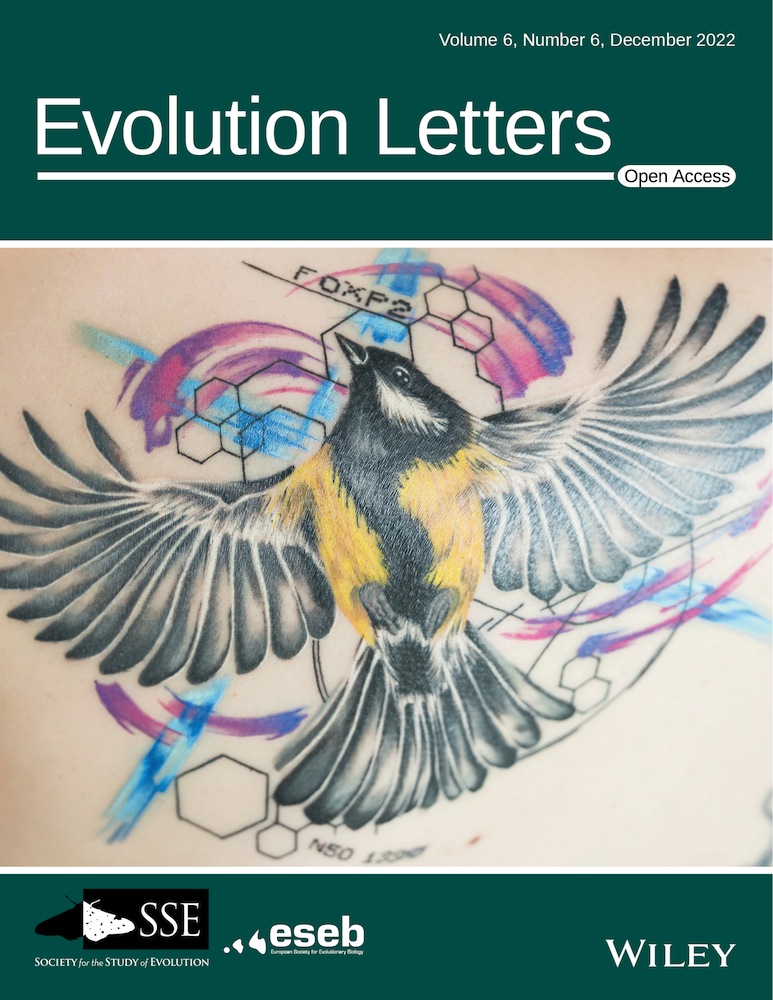残存隐杆线虫年轻和年老亲本种系突变率升高
IF 3.7
1区 生物学
Q2 EVOLUTIONARY BIOLOGY
引用次数: 0
摘要
父母年龄对生殖系跨代突变率的影响尚不完全清楚。虽然一些研究报告突变率与年龄增长呈正线性关系,但其他研究表明突变率随年龄而变化,但不是线性的。我们通过在三个亲本年龄(“年轻T1”[第1天]、“高峰T2”[第2天]和“老T5”[第5天]亲本中产生复制突变积累系,研究了亲本年龄对残存隐杆线虫种系突变的影响。我们进行了全基因组重测序和变异召唤,以比较三代突变积累后突变率的差异。我们发现,与年轻T1和老T5系相比,峰值T2系的总体突变率降低,但这种影响模式因变异影响而异。具体来说,我们在Peak T2品系中没有发现高影响变异,并且这些品系中修饰因子和上游和下游基因变异的频率较低。这些结果表明,与幼龄和老年动物相比,处于繁殖高峰期的动物具有更好的DNA维护和修复能力。我们提出,在优化其DNA维护和修复之前,C. remanei开始繁殖,以较早开始繁殖的好处与后代突变负荷进行交换。随着年龄的增长,后代突变负荷的增加可能代表了种系衰老。本文章由计算机程序翻译,如有差异,请以英文原文为准。
Germline mutation rate is elevated in young and old parents in Caenorhabditis remanei
Abstract The effect of parental age on germline mutation rate across generations is not fully understood. While some studies report a positive linear relationship of mutation rate with increasing age, others suggest that mutation rate varies with age but not in a linear fashion. We investigated the effect of parental age on germline mutations by generating replicated mutation accumulation lines in Caenorhabditis remanei at three parental ages (“Young T1” [Day 1], “Peak T2” [Day 2], and “Old T5” [Day 5] parents). We conducted whole-genome resequencing and variant calling to compare differences in mutation rates after three generations of mutation accumulation. We found that Peak T2 lines had an overall reduced mutation rate compared to Young T1 and Old T5 lines, but this pattern of the effect varied depending on the variant impact. Specifically, we found no high-impact variants in Peak T2 lines, and modifiers and up- and downstream gene variants were less frequent in these lines. These results suggest that animals at the peak of reproduction have better DNA maintenance and repair compared to young and old animals. We propose that C. remanei start to reproduce before they optimize their DNA maintenance and repair, trading the benefits of earlier onset of reproduction against offspring mutation load. The increase in offspring mutation load with age likely represents germline senescence.
求助全文
通过发布文献求助,成功后即可免费获取论文全文。
去求助
来源期刊

Evolution Letters
EVOLUTIONARY BIOLOGY-
CiteScore
13.00
自引率
2.00%
发文量
35
审稿时长
10 weeks
期刊介绍:
Evolution Letters publishes cutting-edge new research in all areas of Evolutionary Biology.
Available exclusively online, and entirely open access, Evolution Letters consists of Letters - original pieces of research which form the bulk of papers - and Comments and Opinion - a forum for highlighting timely new research ideas for the evolutionary community.
 求助内容:
求助内容: 应助结果提醒方式:
应助结果提醒方式:


